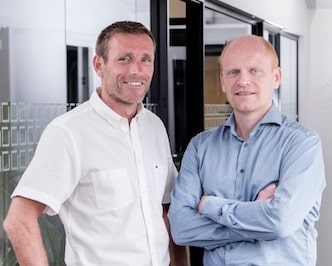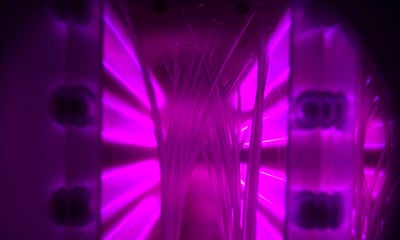What is the benefits from Plasma Etching over Liquid Etching/ Acid Etching?

Here are some of the many benefits of plasma etching over acid etching
- Improves the physical properties of etched material.
- It sticks two surfaces better than other etchants.
- Unlike acid etchants, plasma etchant is also an excellent cleaner and removes all the unwanted organic residues from the metal surface.
- Although plasma improves chemical and physical properties of the metal, it does not change any property.
- By-products formed during the etching are volatile.
- Plasma etching is less risky than acid etching.
In the context of etching, “volatile by-products” means that the unwanted materials created during the etching process easily turn into a gas. This is a good thing for a few reasons:
- Easier removal: Volatile gases can be simply sucked out of the etching chamber with a pump, keeping the etching process clean and efficient.
- Less contamination: Non-volatile by-products would stick around and could coat the material being etched or the etching equipment, leading to imperfections or malfunction.
So, using plasma can effectively improve the quality of fabrication of integrated circuits. Moreover, it can also be used for treating delicate semiconductor wafers and a wide range of substrates.
What is Plasma Etching?
One way to modify the physical and chemical properties of metals is plasma etching. The technique is particularly popular in the digital world for the fabrication of integrated chips.
People have been using concentrated acids to etch copper made printed circuit boards for years. But with the introduction of plasma etching system in the late 80s, PCB manufacturers started relying on this technique.
As the name implies it is a technique of etching in which plasma is used as an etchant instead of strong acids. Plasma is the fourth state of matter, formed by ionizing gas particles, through radio frequency or heating. In order to understand the process of plasma etching, it is important to understand the working of a plasma etching system. The system consists of two symmetrical electrodes for the generation of radio frequency and a ground electrode on which the sample to be etched is placed. There is a gas inlet through which etchant enters the system and there is an outlet for plasma. As the gas enters the system, voltage is applied to partially ionize gas particles.
Usually, the frequency of power generated is 13.6MHz, which is considered as a standard plasma forming frequency worldwide. Radiofrequency is utilized to excite gas electrons and change their state. In order to etch a material with plasma, the etching system generates high-speed pulses of plasma. Depending on the type of etching (dry or wet), plasma consists of either ions or radicals. The process of plasma etching also results in the production of volatile chemical compounds, formed as by-products during the chemical reaction between the plasma and the material to be etched. It takes some time for the plasma atoms to embed at the printed circuit board.

Solving your adhesion problems
We have more than 40 years of experience in delivering and manufacturing quality, high-end surface treatment products for any industry.
Tantec has both standard machines, but also custom-designed machines.
Contact us today and get a quote. We are standing by to service you.
Modes of Plasma Etching Systems
Modes of plasma etching systems vary with the type of the material to be etched, nature of etchant and etching type. For example for dry etching, the system operates on capacitive coupling of radiofrequency. Other factors that influence the generation of plasma and mode of plasma generator are temperature and pressure. Slightest variations in the operating pressure can change the collision frequency of electrons considerably. Moreover, to sustain the state of plasma, it is very important to maintain the operating pressure.
Dry etching
Dry etching is a type of plasma etching, wherein the materials are blasted with ions in a gaseous atmosphere, as previously described. The process dislodges particles of material from the surface and unlike liquid etching (acid etching), dry etching is performed either directionally or anisotropically. Similarly, dry etching enables an easier post-treatment adherence with paints and glues.







